
Article: B. Mattiesen (GERMANY)
End of ISAF Mission
End of a Period: The Last Flag Officer Medical Advisor in Kabul
From October 2013 until June 2014, Brigadier General Dr. Bernd Mattiesen, German Medical Service was the last Medical Advisor at HQ ISAF in Kabul in the rank of a flag officer. His tour of duty was impressed by the declining strength of the Force and a more civilian attitude of the task.
General Remarks
The UN - Resolution 1386 might be seen as the initial ignition for the establishment of the ISAF mission in Afghanistan. The then given task was to assist the legal government of Afghanistan (later “GIROA”: Government of the Islamic Republic of Afghanistan) and provide security over the country. In the first years of the mission ISAF was restricted to the capital, whereas the rest of the country was under the control of the US - led mission OEF (Operation Enduring Freedom ). From 2004 on, a merger of both missions started by creating an increasing number of PRTs all over the country under ISAF control. ISAF was the pillar of Afghan stabilization until the public handover of the security responsibility back to the newly structured Afghan force in 2013.
The Headquarters ISAF have always been located in Kabul in the very well known “Yellow Building” in the middle of the city of Kabul, close to the ministries and the Presidential Palace. Whereas in the beginning of ISAF this compound was only lightly secured even by a fence, in the meanwhile, the evolving threat forced to protect it with concrete walls and double iron doors. This change in the necessities for force protection also depicted a change in behaviour of the staffs. In the early 2000s, under a NATO command changing every 6 months, a European style of life impressed in mood, food and beverages. Under the US led command from 2007 on, this has changed to a fully mission orientated life style comprising the “zero alcohol rule”.
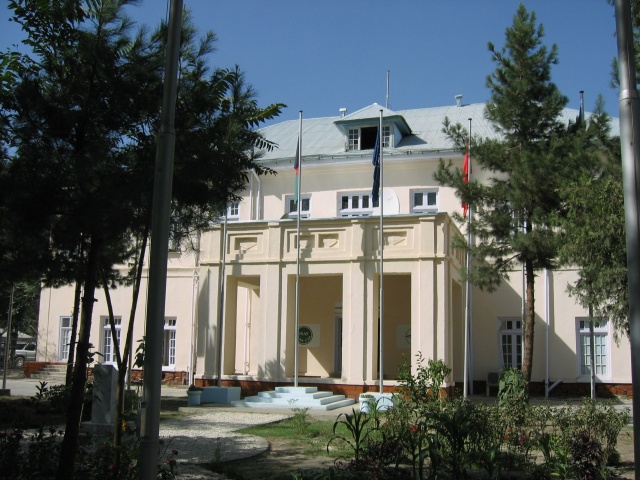 Yellow Building
Yellow Building
Throughout all these times, the Medical Service of ISAF has operated on a very high level and been regarded as one of the most important enablers of the force, also enjoying a high interest on the political level. As a consequence, in all periods of ISAF, the Medical Service was depicted in the staff under high visibility as a branch of its own and commanded by a highly experienced Medical Staff Officer who also was the Medical Advisor to the commander. From 2008 on, the higher command Medical Advisor of SHAPE initiated a process of enhancing the post up to the OF – 6 (Brigadier General) level. As a matter of fact, in the light of a fully grown and mature mission, at the end of the year 2014 the Medical Advisor was one of the 23 (!) Generals in the HQ ISAF. He was subordinated to the DCOS support and technically superior to the Medical Advisors of the Troop Command IJC at Kabul Airport and of the Afghan Support Command NMT-A. However, as a Medical Director he oversaw the whole medical support to own troops. Internally the HQ he presided the JMed Staff. In conjunction of the drawdown of ISAF troos, also JMed shrunk to a basic capability.
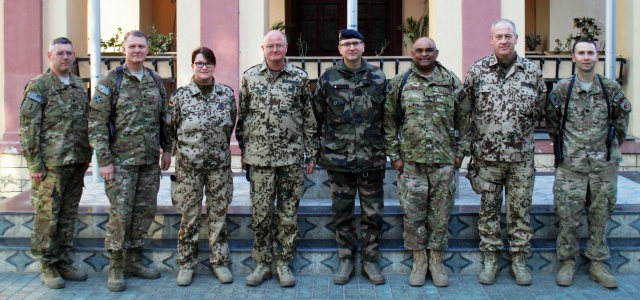 JMed November 2014
JMed November 2014
The Medical Advisors’ Tasks
The Medical Advisors’ Tasks grew and changed with the overall task of the mission. Towards the end of the ISAF mission there was a permanently enhanced view on the Afghan Forces’ Medical Service development.
As given by the ISAF overall task and the organizational structures, the Medical Advisors tasks were threefold:
- Organization and conduct of the medical support to the own troops, done through the IJC surgeon at KAIA ( Kabul International Airport ) North,
- Support the structure and the conduct of the Afghan National Security Forces’ Medical Service,
- Support the build-up of the Afghan civilian Medical Service.
Additionally, the overarching main task of this final phase of ISAF was the adaptation of the size and the ability of the Medical Service to the upcoming “Resolute Support Mission“ ( RSM ), which was to start on 1st January 2015. In this latter task, a variety of ideas and conceptions had to be developed in order to comply with the restrictions and limitations of this new, but strictly restricted mission.
Medical Service towards the own troops
The main task of the former Medical Advisors at HQ ISAF in Kabul was closely linked to the strength of the troops and the intensity of prevailing battle action. Both have been dramatically reduced within the last two years of ISAF. The basis for that was the decision at the London Summit in 2010 regarding ISAF where the participating nations decided to hand over the security responsibility for Afghanistan to the proper Afghan Security forces. This process, which was conducted in a step by step process finally ended with a ceremony on 18th June 2013, when the ISAF Commander Gen Dunfort ( US Marines ) in attendance of the Afghan President Karzai
solemnly declared the end of the NATO led responsibility .
However, troops stayed in the country to support the Afghan Forces. Towards the initial capabilities of RSM, the troop’s strength which continuously had grown up to 130.000 in the year 2012, was downsized to 12.000 until December 2014. This radical process had to be followed by the Medical Service. Both the dramatically reduced strength of the ISAF troops and the ongoing withdrawal from the participation of fighting activity resulted in a reduced number of soldiers being in need of medical assistance. Following the troops, a lot of Role 1 facilities had been dissolved, whereas the Role 2 and 3 surgical capabilities still remained in the centre of the still active bases and supported the further withdrawal. Together with the MedEvac Helicopters being stationed at these bases they were the core of the famous “1 - hour - radius -bubbles” which allowed the troops to operate. The dramatic reduction might be seen by the following: As in the beginning of the tour 36 bubbles covered nearly all Afghanistan, in the end only 9 were left over, which reduced the operational radius strongly and created inactive gaps between the areas of medical coverage. This might be seen as weakening of own capabilities. However, in the logic of the handover of the security responsibility to the Afghan side, this simply showed the will towards transition and for that had to be accepted by the troops.
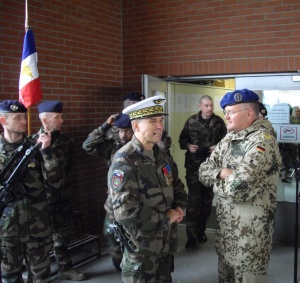 Last change of command at the French military hospital
Last change of command at the French military hospital
Today the result are five bases in the “hub and spokes” model, which in future might lead to a final Kabul centric solution. However, it was just the Kabul Medical Service which created some problems: After a half years announcement, France withdrew its medical and surgical participation at the KAIA North Hospital. No nation accepted responsibility to step in, and the threat of an unsupported capital occurred. When finally and thankfully the US stepped in, it was not in the first line a military decision but a political one, as the embassies so demanded.
Apart from these future planning tasks, the most pleasant part of the time as Medical Advisor at HQ ISAF in Kabul was the continuous contact to allied medical personnel at Kabul and the out - stations. The visits to the US - hospital in Bagram and the facilities at Herat, Mazar - e - Sharif and Kandahar gave a deep insight in their various capabilities. These visits to the different troops locations gave a perfect overview over the various capacities and abilities. All medical personnel proved to be well educated and dedicated to the mission, and also the Role 2 and Role 3 medical treatment facilities showed an extraordinary high level of dedication and medical as well as surgical preparedness. Simply the number of emergency beds and surgical treatment rooms were differing. Such international experience should not be missing in the personal experience of a commanding medical officer. The visit to the Role 2 at Herat was even depicted on the homepage of the Spanish MOD.
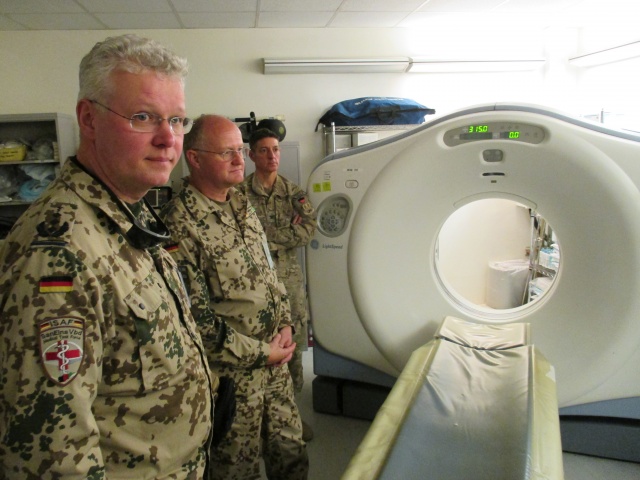 Visit at the Bagram US military hospital
Visit at the Bagram US military hospital
Medical Support to the Afghan Security Forces
The second but continuously evolving task was the support to the Afghan Security Forces and Institutions. This latter comprised the Afghan National Defence Forces, as mainly represented by the Army as well as the various entities of the Afghan National Police. Primarily, there was never a discussion about the necessity for medical support. This included the regular health care of the soldiers and policemen as well as the treatment of battle injuries. However, this had to be taken more in account, as for the year 2013 the statistics proofed 4600 soldiers or policemen of the Afghan forces killed, with “merely” 125 of the allied troops1. This outnumbered by far the numbers of the wounded and killed soldiers of the ISAF troops in the years before2, when the international community cared for Afghanistan’s security.
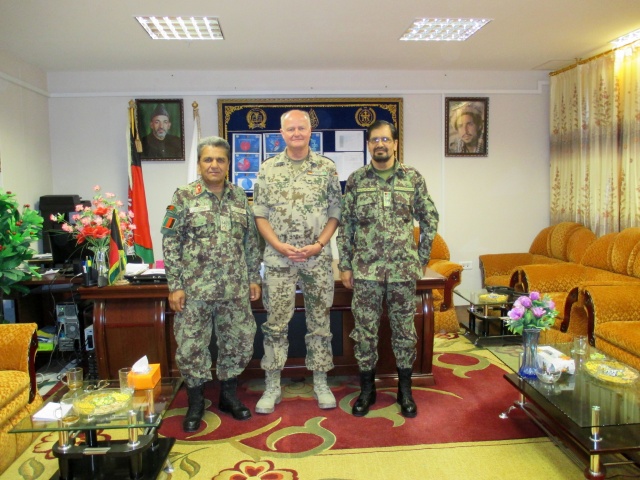 Visit in the Mazar-e-sharif Military Hospital
Visit in the Mazar-e-sharif Military Hospital
Regarding the Afghan medical abilities, the military hospitals showed capabilities close to European standards, even if the outpatient service, the emergency treatment and the patient evacuation allowed some space for amelioration. A process of permanent improvement had to be started. A series of conferences (“shura”) and the lasting support by COMISAF showed results in the end. It had to be accepted to use high value assets, as there were e.g. Afghan helicopters to serve for evacuation means. This process was not an easy one, but in the end it showed essential steps towards success.
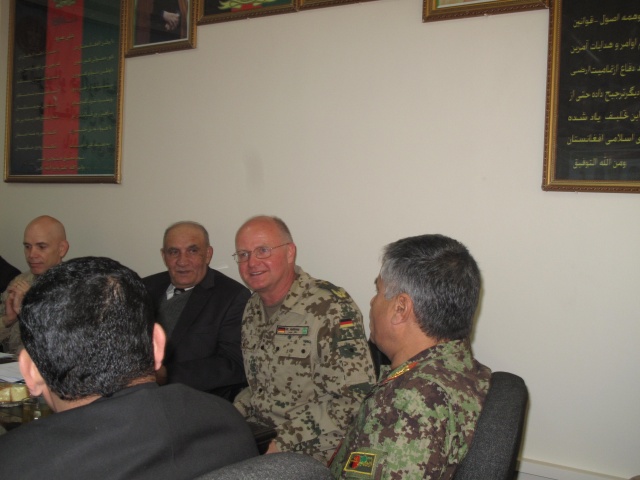 Attending an Afghan shura
Attending an Afghan shura
When the depicted process for the armed forces must be seen as difficult, that for the police was even more difficult. The reason for that might be seen in the wide spread structure with a variety of different responsibilities. One very positive exception was the police hospital in the middle of Kabul, which showed a professionalism near to the army hospital. Notwithstanding that, it was a unanimous opinion of all responsible leaders, that a performing Medical Service is one of the bases for a successful Afghan take over of responsibility.
Reconstruction of the Afghan civilian health system
The last but most exciting task was the assistance in the reconstruction of the Afghan civilian medial service. The Afghan civilian medical service has succeeded in a sharp reduction of birth death and has contributed to a massively prolonged life expectance. However, the deep dependence on humanitarian assistance by foreign countries had to be overcome. For that, a medical council on the level of medical educated parliamentarian deputies had been convened in order to work out a first draft of medical regulating laws, which could be used as a very basic level of quality management. The incumbents were highly medical skilled and had been educated in foreign countries, so as an exception, direct communication was possible. Indeed, a high variety of suggestions and proposals were discussed and some results became part of a protocol. The problem shown not only in the medical field was the fact that the technical level was unquestionable. However, the problem had to be seen in the realization. Even the proposal of a parliamentarian discussion was severely discussed in this council. Only the way ahead was still complicated. In the end, it was clear, that Afghanistan would be depended on international aid for quite some time. This opinion was unanimously shared between all stakeholders in Afghanistan.
Final results
No article about the participation in a military mission might be without the final question whether the effort really had its merit. This should of course not be answered in regard to the political question of one nations’ participation but rather on a very personal level. The risk, the threat, the absence from home and the need for military additional education has to be balanced with the job satisfaction, the comradeship and the effect to the people of Afghanistan. From my very personal point of view, this country deserved the attendance of our troops.
1 See at: http://de.reuters.com/article/worldNews/idDEBEEA1300E20140204 ; Reuters : Verluste afghanischer Sicherheitskräfte
Date: 06/09/2015
Source: MCIF 2/14











